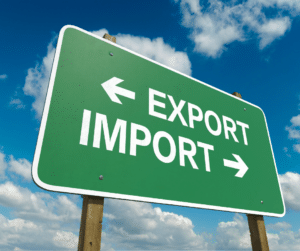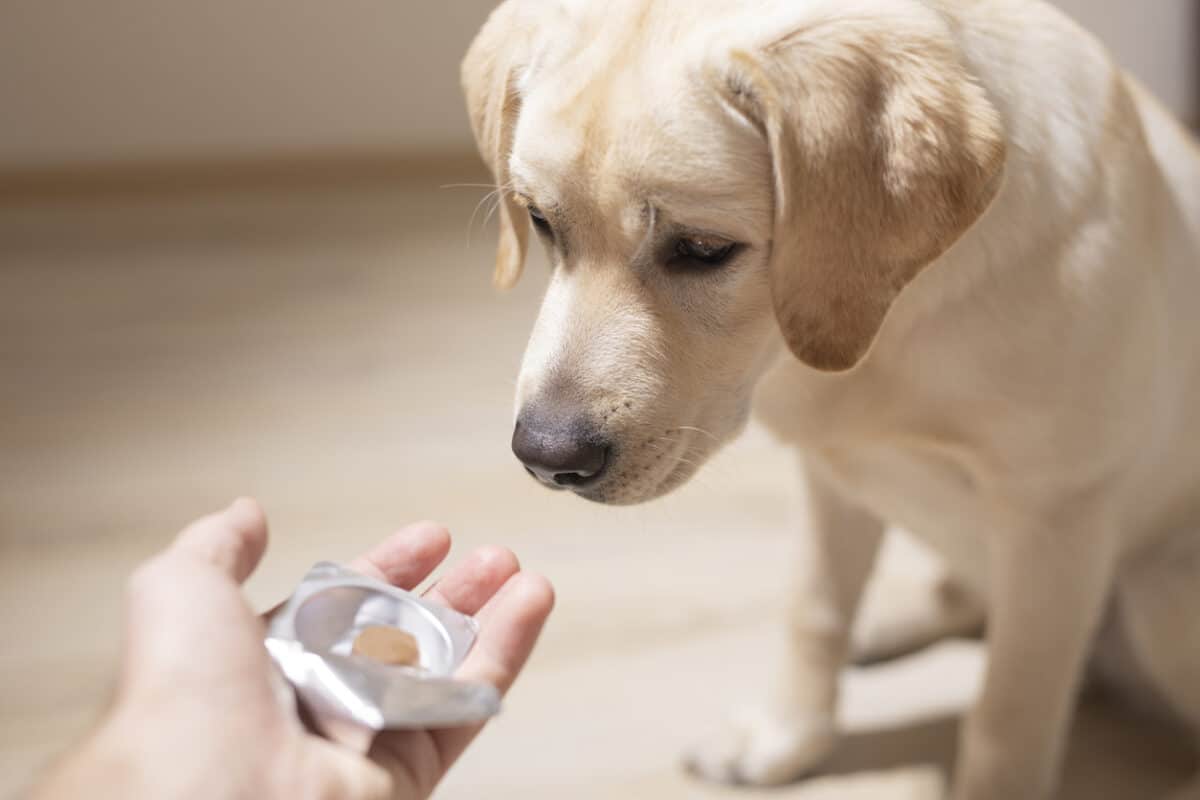Introduction
Prior notice is a requirement for all food manufactured, processed, packed, or held outside the United States that is imported into the United States. It ensures that the U.S. Food and Drug Administration (FDA) has the opportunity to evaluate the safety of a food shipment before it enters U.S. commerce and provides an opportunity for the FDA to inspect food products at their first port of arrival in the United States. In addition to protecting public health, prior notice allows the FDA to reduce costs associated with detaining or refusing entry of potentially unsafe foods into U.S. commerce.

Submitting your FDA Prior Notice:
Prior Notice requires the submitter to provide certain information related to the food shipment to the FDA, including:
- The name and address of the manufacturer, packer, or distributor
- The name of the product
- The quantity of each product being shipped
- The anticipated arrival date of the shipment in the United States (or another applicable country)
- Ports of entry through which the shipment will be imported into that country (e.g., “Port of Entry #1”) or another country relevant to a particular prior notice submission. This can be helpful if multiple countries are involved in your food importation process, and you wish to track your products as they move across borders—a very common situation for global brands selling products across continents!
How do food importers submit their FDA prior notice?
Under Section 801(a) of the Federal Food, Drug, and Cosmetic Act (FDCA), the FDA has the authority to require that importers provide prior notice before the food product is imported into the United States.
The FDCA ensures that foods are safe for consumers by prohibiting contaminated foods from entering or being sold in interstate commerce and requiring all foods shipped in interstate commerce to be labeled accurately.
What is FDA prior notice?
Prior notice is a requirement the FDA sets for all food imports into the United States. It involves providing the FDA with information about the imported food, including the name, country of origin, manufacturer or grower, and intended recipient in the United States.
This information must be submitted to the FDA at least four hours before the food arrives at a U.S. port of entry. Prior notice helps the FDA identify and prevent potential food safety risks before they enter the U.S. food supply chain.
Need help submitting your FDA prior notice?
When to Submit Your FDA Prior Notices?
Prior notice submissions must be submitted at least 24 hours before the shipment arrives in the United States. The FDA allows prior notice submissions to be submitted any time after a transaction has been agreed upon, but by two hours before the shipment arrives at its first port in the United States.
The FDA also requires a valid prior notice submission to accompany each shipment, or it will be refused entry. Any importer or shipper can submit a prior notice on behalf of an importer. Still, they must have authorization from the foreign manufacturer or distributor and have access to certain information about their products, such as ingredient lists and countries of origin.
Can my FDA Prior Notice submission be rejected?
If the FDA cannot receive the information required by prior notice before a particular shipment of food arrives at its first port of arrival, the FDA may refuse entry of the food into the United States. It is important to note that for a submission to be considered “on-time,” the request must be received by the FDA within 30 calendar days from when the product enters U.S. commerce (i.e. when it is entered into any port).
Who needs to submit prior notice?
Any person or company that imports food into the United States must submit prior notice to the FDA. This includes individuals, businesses, and organizations that import food for commercial or personal use. The only exception is food imported for personal consumption and not intended for sale or distribution. It is important to note that compliance with prior notice requirements can result in detention, refusal, or even destruction of imported food.
What information is required for prior notice?
When submitting a prior notice to the FDA, importers must provide specific information about the imported food. This includes the name and address of the manufacturer, the country of origin, the identity of the importer, and a description of the food. Additionally, importers must provide information about any known hazards associated with the food, such as allergens or contaminants. It is crucial to ensure that all information provided is accurate and up-to-date to avoid any issues with the FDA.
How do I submit prior notice?
Prior notice can be submitted electronically through the FDA’s Prior Notice System Interface (PNSI) or an FDA-approved third-party system. Importers must provide all required information at least four hours before the food arrives at the port of entry. If the information is submitted promptly, the food may be allowed entry into the United States. It is essential to remember that prior notice is required for all food products, including those intended for personal use or consumption.
What are the common mistakes to avoid when submitting an FDA prior notice?
Importers should avoid several common mistakes when submitting FDA prior notice. One of the most common mistakes is failing to provide accurate and complete information about the imported food product. This can include incorrect or incomplete product descriptions, incorrect country of origin information, and missing or incorrect FDA product codes. Another common mistake is failing to submit a prior notice promptly, which can result in the food product being refused entry into the United States. Importers should also ensure they use an FDA-approved third-party system or the FDA’s Prior Notice System Interface (PNSI) to submit a prior notice electronically.
Do you need help submitting your FDA prior notice?
In addition to webinars and videos, the FDA offers e-learning modules on Prior Notice for Human Food. The most recent module, “ePrior Notice for Human Food,” was released in 2017. The video explains what happens when prior notice is missing and gives step-by-step instructions on filing an effective prior notice submission. This includes providing details on creating an electronic request using the FDA’s eSubmitter tool and submitting it to the FDA through specific portals.
The video also covers common problems that are encountered when submitting a prior notice submission as well as ways to avoid them during submissions by giving best practices advice such as providing all required information upfront instead of waiting until after the proposal has been submitted before finding out missing data needs adding or updating later on down the road—something that could delay approvals unnecessarily due to delays caused by rework efforts needed afterward!
What are the prior notice requirements for imported food?
If you import food into the United States, you must submit prior notice to the FDA at least four hours before the food arrives at the border. The notice must include specific information about the food, including the name, quantity, country of origin, and manufacturer’s or importer’s name and address.
There are several ways to submit a prior notice, including electronically through the FDA’s Prior Notice System Interface (PNSI), fax, or mail. The PNSI is the preferred submission method for faster notice processing. However, if you submit by fax or mail, you must include a completed FDA form with the notice.
It’s important to note that submitting a prior notice can result in costly penalties and delays in shipment. In some cases, non-compliance can even lead to product seizures.
What are the prior notice requirements for domestic food?
You must also submit prior notice to the FDA if you operate a domestic food facility. However, domestic facilities’ requirements differ slightly from those of importers.
Domestic facilities must only submit a prior notice for food being transported to another facility for further processing or to a foreign country. The notice must include specific information about the food, including the name of the food, the quantity, and the name and address of the receiving facility or country. The notice must be submitted at least eight hours before transporting the food.
As with imported food, submitting a prior notice for domestic food can result in penalties and delays in shipment.
What are some common mistakes to avoid in prior notice submissions?
Submitting a prior notice can be complex, and businesses make several common mistakes. Some of these mistakes include:
– Failing to submit Prior Notice on time
– Providing incomplete or inaccurate information on the notice
– Failing to update the notice if there are changes to the shipment
– Submitting multiple notices for the same shipment
– Failing to include the required information on the notice
To avoid these mistakes, businesses should ensure that they have a thorough understanding of the prior notice requirements and use the FDA’s preferred submission method. It’s also important to double-check all the information on the notice before submitting it to ensure it is accurate and complete.
What are the penalties for noncompliance with prior notice regulations?
Noncompliance with prior notice regulations can result in costly penalties and delays in shipment. In some cases, non-compliance can even lead to product seizures. The FDA has the authority to refuse entry to any food shipment that does not comply with the prior notice requirements.
The penalties for noncompliance can vary depending on the severity of the violation. In some cases, businesses may be warned about a minor infraction. However, penalties can range from fines to criminal charges for more severe offenses.
To ensure that your business is not subject to penalties for noncompliance, it’s essential to understand the prior notice requirements and to submit the notice on time with accurate and complete information.
How do you ensure compliance with prior notice regulations?
To ensure compliance with prior notice regulations, businesses should take the following steps:
– Understand the Prior Notice requirements for imported and domestic food
– Use the FDA’s preferred method of submission (PNSI)
– Double-check all of the information on the notice before submitting it
– Update the notice if there are changes to the shipment
– Keep accurate records of all Prior Notice submissions
It’s also a good idea to work with a reputable customs broker or logistics provider who has experience with prior notice submissions and FDA regulations.
Why is FDA Prior Notice important?
The FDA Prior Notice system was established to protect American consumers from unsafe or mislabeled food, drugs, and other products. It requires importers to provide specific information about their goods before arriving in the country, allowing the FDA to identify and address potential safety concerns. This system helps to ensure that the products you import are safe for consumers and that you are not subject to costly fees or delays.
By filing prior notice, you are providing the FDA with important information about your products, such as the manufacturer’s name, country of origin, and type of product. This information allows the FDA to quickly identify any potential safety concerns and take action to prevent unsafe products from entering the country. Failure to file prior notice can result in lengthy delays, costly fees, and even rejection at the border, so it is crucial to ensure that you are familiar with this process.
What happens if a Prior Notice needs to be submitted or rejected?
If you fail to submit a prior notice or if your prior notice is rejected, your shipment may be subject to delay or even rejection at the border. This can result in costly fees, other expenses, and damage to your reputation as an importer.
To avoid these issues, it is crucial to ensure that you are submitting prior notice in a timely and accurate manner. If your prior notice is rejected, you may be able to correct the errors and resubmit it, but this can result in additional delays and expenses.
How to ensure your imports pass FDA Inspection?
Submitting prior notice is just one part of ensuring your imports pass FDA inspection. To increase your chances of success, you should also provide that:
– Your products meet all FDA regulations and standards
– Your products are appropriately labeled and packaged
– Your products are transported and stored under appropriate conditions
– You have all necessary documentation, such as certificates of origin and bills of lading
By taking these steps, you can help to ensure that your imports pass FDA inspection and are safe for American consumers.
Resources for FDA Prior Notice Information and Assistance
If you have questions or concerns about the FDA Prior Notice system for imported foods, many resources are available to help you. These include:
– The FDA’s Prior Notice Center, which provides information and assistance with prior notice issues
– Customs brokers and other third-party providers who can assist with submitting prior notice
– Trade associations and industry groups that guide FDA regulations and standards
Conclusion
In summary, the FDA expects a prior notice submission to be complete and accurate, as well as timely. This means submitting an appropriate quantity of information at the right time and in an approved format. If your company is required to submit a prior notice for food imports or exports and is not doing so consistently or accurately, you may be subject to enforcement action. Contact us today for more information!
We hope this post helped you understand food additives and preservatives a little better. There are many different kinds, and they can have a big impact on your health. For all your food importing needs our experts at Quality Import Solutions can help.





 Introduction
Introduction


 Introduction
Introduction


